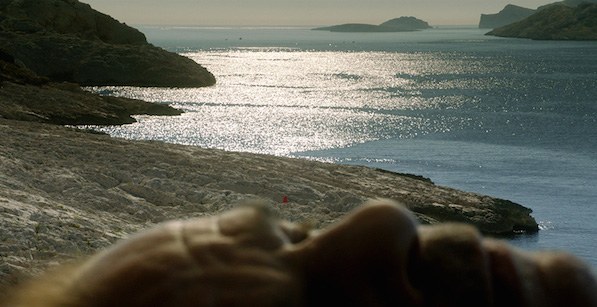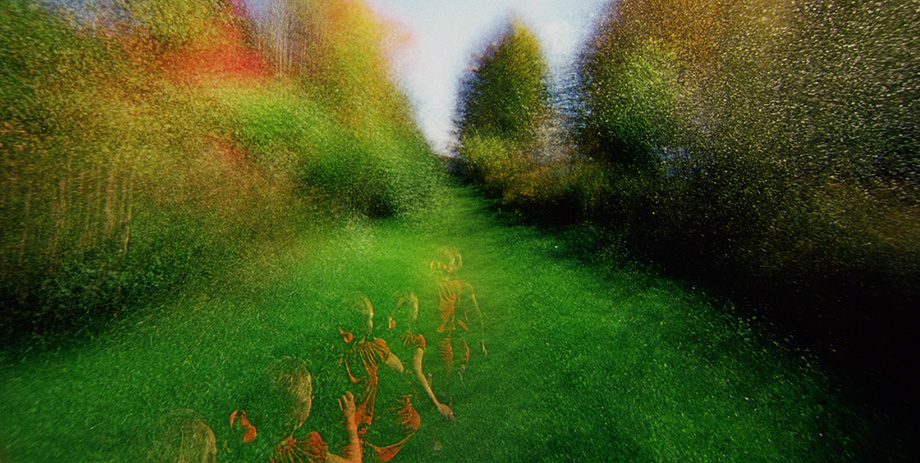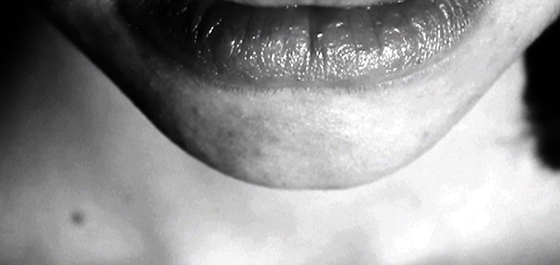
Lists, by their very nature, are subjective endeavors. Lists dedicated to the avant-garde, already a nebulous term, perhaps even more so, defined as they are as much by the viewer’s proclivities as their personalities (to say nothing of their politics). Which is one of many reasons I’m happy to have fellow Keyframe contributor Michael Sicinski helping me with this list of the year’s best of the avant-garde. Last year my ten selections came together rather easily, perhaps due to the accomplishments of some rather renowned names (Nathaniel Dorsky, Miguel Gomes, Jean-Luc Godard, and Jean-Marie Straub, among them). This year the riches were a bit more evenly distributed. Big names, again including Dorsky and Godard, were in some ways outshone by younger, less established or under-recognized talents. Likewise, the standout films seemed to be distributed amongst festivals in a more democratic fashion; in our selections there are works that premiered at various points throughout the calendar year, not simply in TIFF’s Wavelengths or NYFF’s Projections programs (though they still inevitably account for a lion’s share).
Befitting the breadth of possibilities, Michael and I decided to each select five different films from a pool of about sixteen which we nominated between ourselves as the year’s most valuable. Think of them together as a top ten if you will, or rather more accurately as a cross section of some of the most boundary-pushing work in contemporary experimental cinema. Our guidelines were fairly free, though we ultimately decided against including feature-length (sixty-plus minute) films. And yet our selections still include, in addition to non-fiction and essayistic work, non-narrative, durational, and stereoscopic experiments—there’s even a sports film. And all in a variety of digital and celluloid formats to boot. As the terms of the avant-garde and its academic infrastructure inevitably evolve, and as filmmakers tentatively look toward alternative means of production and dissemination—the impediments to and implications of which were recently outlined in an essential Film Comment essay by Genevieve Yue, Living Cinema: Experimental Film and the Academy—attempts such as this to encapsulate any given year in any specific subset of cinema will likewise only continue to mutate. And in that sense, there’s no better analogy for those gallantly attempting to explore the depths of non-commercial filmmaking. Here are some discoveries:

5. brouillard – passage #14 (Alexandre Larose) (Toronto: Wavelengths; Zagreb: 25 FPS)
Perhaps the year’s most painstakingly assembled work, Alexandre Larose’s intoxicating lakeside reverie—composed of over 120 individual tracking shots superimposed atop one another in an impressionistic eddy of primary pigments and fragmentary figures—condensed the tenets of both the nature and travelogue film into a free-floating stroll across a simultaneously static and shape-shifting landscape. The opening film of this year’s Wavelengths Shorts program, brouillard – passage #14 set a serenely mesmeric mood which persisted alongside even the festival’s most dynamic entries, and one which continues to linger months later, memories caught in the film’s laconic drift between waking and imagined horizons.
4. Canopy (Ken Jacobs) (Toronto: Wavelengths; New York: Projections; Vienna: Viennale Shorts)
The latest work from octogenarian experimentalist Ken Jacobs quite literally animates the inanimate, awakening the physicality of that most common of urban eyesores, the construction scaffold, through an elemental process of pattern displacement. A stereoscopic interrogation of a succession of static images, which Jacob sends careening through an array of horizontal pivots and exposure effects, the film accumulates a natural visual rhythm as the apparent capacities of both the canopy and camera’s frame expand and contract in a kind of virtual symbiosis. Many filmmakers, including Jacobs, have recently taken to exploring the potential of three dimensional technologies. Canopy, however, proves that the human eye is still the most potent activating agent of all.

3. Pan (Anton Ginzburg) (New York: Projections)
Anton Ginzburg’s Pan unfolds in unassumingly dramatic fashion, accumulating historic and cinematic gravitas as it unlocks a slipstream of bygone mediums through a conflation of various aesthetic modes and materials. Commencing with a visual overture of sorts, as Ginzburg’s 16mm lens gazes upon the ornate architecture of an unnamed cathedral, the film initially appears to be reverently indexing a space of social and spiritual intimacy. And indeed, the monumentality of these black-and-white images is worthy of Wiseman or Emigholz. But soon the image tilts and distorts, pulling back to reveal the source of the image on screen and the apparatus aiding our perspective as distinct entities. The church footage, now seen as a projection, flickers across the frame as a video monitor rests conspicuously in the distance. As Ginzberg’s camera then proceeds to push into the screen’s distorted, analogue pixelations, unstable hues flowing lava-like across the screen, these subtle epiphanies induce a kind of retroactive syndication, suggesting an aesthetic continuum which Ginzburg leaves ominously open-ended.

2. Sea of Vapors (Sylvia Schedelbauer) (Ann Arbor: Competition; Oberhausen: Germany Competition; Toronto: Wavelengths; New York: Projections)
Like Jodie Mack’s instantly iconic Let Your Light Shine, my top choice as last year’s best of the avant-garde, Sylvia Schedelbauer’s Sea of Vapors seems to approach a new plateau for sensory thrills and experiential engagement. Essentially a mix of black and white archival footage and still photography exposed to a flood of uninterrupted flicker effects, the film wrests an air of tactile disorder from Schedelbauer’s hand-stitched mosaic of otherwise everyday appearances and associations. Close-ups of hands and mouths, arms and eyes, sit uneasily atop and alongside images of domestic detail and outdoor immensity, blurring the contours and constituents of each interlocking (and interlayered) frame—objects becoming shapes just as extremities become abstractions. Meanwhile, the soundtrack, all sustained keyboard drone, swarming dissonance and disembodied noise, drifts perilously overhead, countering the magnetic pace of the montage with a swell of pregnant anticipation. You might call it the year’s best horror film.

1. Journey to the West (Tsai Ming-liang )(Berlin: Panorama; Tribeca: Official Selection; Toronto: Wavelengths; Vancouver: Dragons & Tigers)
Director Tsai Ming-liang may have “retired” from feature filmmaking following 2013’s Stray Dogs, but he would almost immediately follow it up with this fifty-six-minute marvel of diagrammatic inertia and anatomical endurance. The year’s most committed feat of filmmaking—indeed, this may be the most literal manifestation of slow cinema yet conceived—the Taiwanese master’s latest furthermore stands as a culmination of many of his primary formal and thematic preoccupations. The sixth (and perhaps final) entry in the director’s Walker series, Journey to the West features Tsai’s longtime muse Lee Kang-sheng again pushing his excruciatingly measured movements to the limits of physical and psychological capability. As a monk moving molasses-like through Marseilles, the city teeming with activity around his red-robed frame, Lee is a figure of monumental poise. And he’s joined in this loose interpretation of the life of seventh-century Buddhist ascetic Xuanzang—whose seventeen-year pilgrimage across Asia has attained mythic distinction—by French actor Denis Lavant, he himself widely admired for the physically demanding roles he often portrays. Over the course of fourteen immaculately staged and choreographed shots, more than a few of which nearly defy compositional logic, the two actors proceed from disparate planes before converging in a kind of chase sequence through the bustling city streets, time seemingly suspended, space essentially frozen as these two figures calculatedly advance through the director’s static, luminescent frame. So while Tsai claims to have set aside feature-length filmmaking, he appears to be far from finished. If anything, Journey to West represents yet another very deliberate, very determined step forward.




